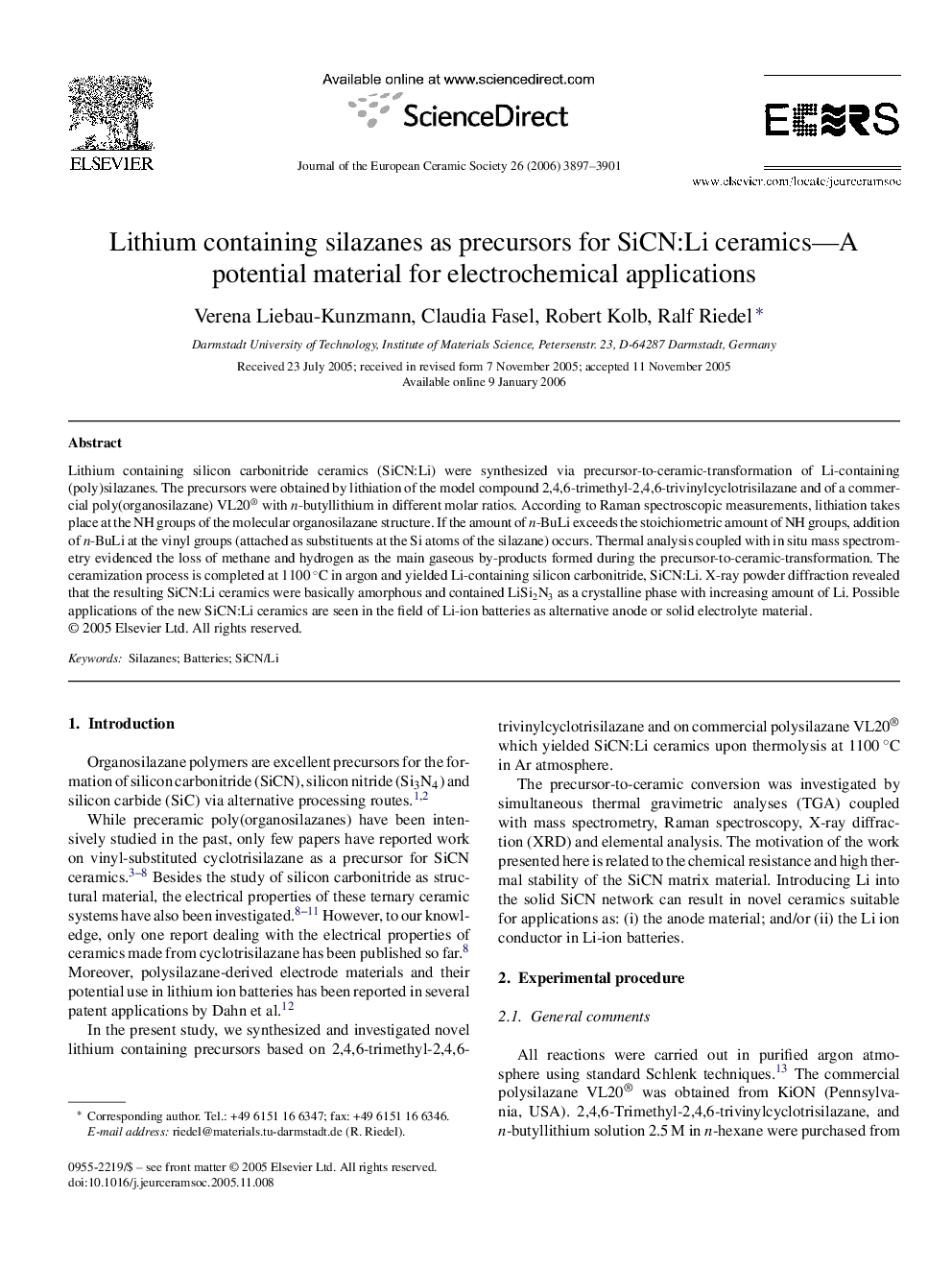| Article ID | Journal | Published Year | Pages | File Type |
|---|---|---|---|---|
| 1477149 | Journal of the European Ceramic Society | 2006 | 5 Pages |
Lithium containing silicon carbonitride ceramics (SiCN:Li) were synthesized via precursor-to-ceramic-transformation of Li-containing (poly)silazanes. The precursors were obtained by lithiation of the model compound 2,4,6-trimethyl-2,4,6-trivinylcyclotrisilazane and of a commercial poly(organosilazane) VL20® with n-butyllithium in different molar ratios. According to Raman spectroscopic measurements, lithiation takes place at the NH groups of the molecular organosilazane structure. If the amount of n-BuLi exceeds the stoichiometric amount of NH groups, addition of n-BuLi at the vinyl groups (attached as substituents at the Si atoms of the silazane) occurs. Thermal analysis coupled with in situ mass spectrometry evidenced the loss of methane and hydrogen as the main gaseous by-products formed during the precursor-to-ceramic-transformation. The ceramization process is completed at 1100 °C in argon and yielded Li-containing silicon carbonitride, SiCN:Li. X-ray powder diffraction revealed that the resulting SiCN:Li ceramics were basically amorphous and contained LiSi2N3 as a crystalline phase with increasing amount of Li. Possible applications of the new SiCN:Li ceramics are seen in the field of Li-ion batteries as alternative anode or solid electrolyte material.
